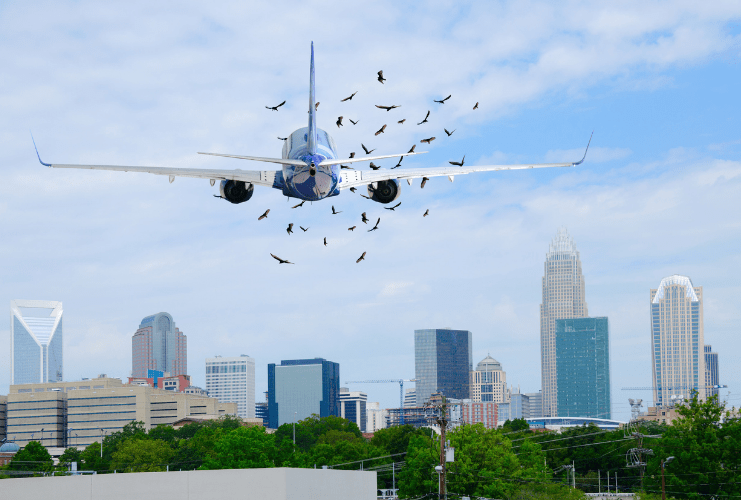Preventing bird strikes is a constant and growing challenge for airports. In 2018, bird strikes affected 16,448 civilian flights in the USA. That number rose to 17,404 in 2019, more than 47 per day. Over the last two decades, bird strikes have been blamed for more than 106 civilian deaths worldwide and cause around $1.2 billion a year in damage.
This presents a serious and continuous threat – which is why more airports are starting to look for innovative solutions, such as specialised bird detection radar, to tackle it. These radars can detect, track, and analyse bird activity. Here are five key reasons why this technology is a vital tool that every airport should be using today.
The 5 Benefits of Airport Avian Radar Systems
1. Liability Issues Are Easier to Prevent
More and more international airports are becoming increasingly aware that sticking to conventional methods could raise issues with liability if and when something doesn't go to plan.
Avian radar not only enables quick intervention, but also timely NOTAM and BIRDTAM messaging. With this tool, airport teams can make structurally well-informed and high-impact decisions – and use data to justify them.
2. You Get the Right Data to Mitigate Bird Strikes More Effectively
To mitigate bird strikes, you need details – comprehensive, accurate data that tells you what kind of threat you’re dealing with, where it is, and how fast it is.Bird detection radar gives you all this information. It’s capable of tracking the flight paths of both single birds and large flocks. And it can automatically detect and log data on hundreds of birds at once, including their size, speed, and direction.
3. Ground Teams Can Respond Faster
When dealing with a high-risk bird threat, time is of the essence. A swift response can spell the difference between a safe flight and a disaster. So, your operational teams on the ground need to know when and where threats occur as quickly as possible.
Avian radars can instantly push out real-time bird tracks straight to devices in your ground team’s bird control vehicles. This gives your teams a much higher level of situational awareness, allowing them to respond to bird threats much faster. The system can also warn them if a flock of birds is about to enter a critical zone, so they can take immediate action.

4. Airport Avian Radar Systems Work Around the Clock
Ground operations staff are only human. No matter how diligently they work, they can only be and look in one area at a time. Even when equipped with fast vehicles and powerful binoculars, they’ll struggle to spot bird activity from the other side of a miles-wide airport, especially in low visibility conditions.
Not so with avian radar. Unlike people, they don’t sleep. They can track birds non-stop in real-time, 24 hours a day, seven days a week, across your entire airport. They also work in low visibility conditions, so even if your airspace is thick with fog, you’ll still have a handle on bird activity.
5. Prevent Bird Strikes by Learning From the Past
Here’s another important benefit of bird detection radar: the longer you use them, the more insight you can gain to help you prevent bird strikes before they happen.
These systems can recall, play back, and analyse all the data they record. Using these analytics, you can uncover patterns in bird activity, from their migration paths to how seasonal and weather changes affect their behaviour.
As the system gathers more data over time, you’ll discover key areas around your airport where birds roost, feed, and breed, arming you with information that helps inform wildlife management policies and prevent future bird strikes.
You'll also collect objective, quantifiable data on near misses, bird densities, runway crossings, and more. By making this data visible to head office, they can create clearly defined key performance indicators (KPIs) to gauge whether existing policies are working and discover where to improve avian management.
Prevent Bird Strikes with Airport Avian Radar Systems
As bird strikes at airports remain an ongoing threat to aircraft, your airport must be ready to react to them fast and at any time.
Advanced avian radar systems are becoming the norm at international airports. In the future, you won't have to justify investing in this technology. You'll have to justify why your airport doesn't have it in the first place.


